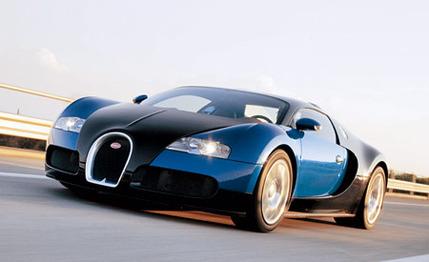 First Drive Review
First Drive Review
Readers of our November 2005 cover story on the Bugatti Veyron 16.4 were treated to the visceral experience of driving the world's fastest production car to an astounding 253 mph, with our mostly fearless editor-in-chief at the wheel, goose bumps and all.
Csere's experience noted that the Veyron is also the planet's most expensive production car, with a base price of $1,250,000.
But what's it like to drive a car that can go faster than a Formula 1 racer or Concorde at the point of takeoff on normal roads in everyday circumstances?
It was my task to find out. A tough job, but someone had to do it. The location was the island of Sicily, perhaps not typical of road conditions anywhere in America but a brave choice for a car of such potential. The mountain roads, as used in the past for the famous Targa Florio road race, are bumpy and narrow for a car that is 78.7 inches wide (a VW Passat is a hair less than 72 inches). And Sicily's autostradas are fast, but not fast enough for the Veyron. In a day's driving, I only once touched 180 mph.
With the Veyron's top speed another 70 mph away, this counts as a low-speed preview. Csere has noted how planted and stable the Veyron feels up to 230 mph and at lesser speeds before the driver selects the low-drag "top speed" settings. At 137 mph, the car automatically goes into the "handling" configuration, in which a hydraulic system lowers the car's ride height and extends the double-deck spoiler for more downforce. You can select this at any time by pressing a button alongside the gear selector, but on slower, winding roads it is a doubtful advantage and makes for a harsher ride.
The surprise is that left to its own devices the Bugatti is a pussycat. The mighty 8.0-liter quad-turbo W-16 engine starts on the button and never misses a beat. There is nothing fierce about the controls. Both the throttle and the brake pedal, operating on massive carbon-ceramic discs, are progressive and require only moderate effort. The steering, which feels almost too light initially, has speed-variable power assist and is not affected by road bumps. The ride is firm but not punishing, except when it jolts over expansion joints on a concrete highway.
As Bugatti president Thomas Bscher, a GT-racing champion and serial supercar owner, observes, the single most brilliant thing about the Veyron is its transmission. The F1 electrohydraulic shift system of the Ferrari Enzo is effective but brutal, and the Porsche Carrera GT's miniature ceramic clutch is tricky to manage around town. Bugatti's seven-speed DSG twin-clutch gearbox needs no clutch pedal, encourages manual shifting using paddles mounted on the steering wheel, and works equally well and entirely smoothly in automatic mode.
So this car is as comfortable trickling around a country-club parking lot as it is blasting along at four miles a minute. But you don't want to drive it that way. You want to press the accelerator to the floor and watch the needle on the power gauge wind to 1001 horsepower and the rev counter swing past its 5000-rpm sweet spot to experience acceleration that is beyond comprehension.
Then you had better pay attention because corners come up awfully quickly. The car does a good job looking after you. The Haldex four-wheel-drive system, which nominally distributes the engine's output 30/70 front to rear, constantly adjusts the torque split, and Bosch stability control is there to further maintain cornering stability. You don't find these features on the race-bred hypercars. Which is one reason why the Veyron weighs a grand 4300 pounds.
There are those who think something this expensive should be perfect. It isn't, of course. Visibility is seriously restricted by thick windshield pillars and shallow side windows. Trunk space is stingy, and the car is too noisy in the confines of the elegantly furnished cabin to appreciate the posh stereo or hear the spoken instructions from the navigation system.
But as a safe street-legal car that can exceed 250 mph, the Veyron is unique. Finding that it is also unfussed traveling at 25 mph compounds a remarkable achievement.